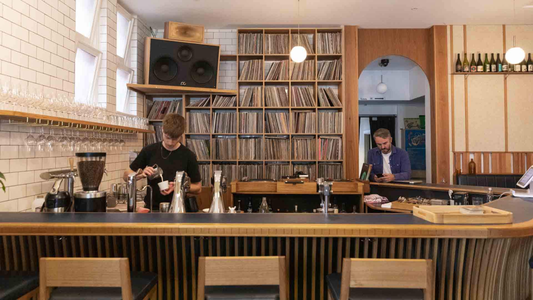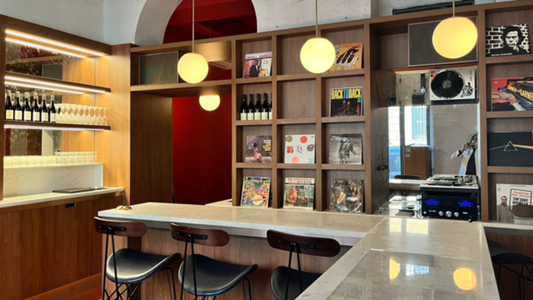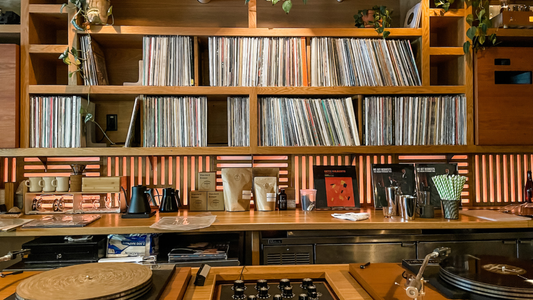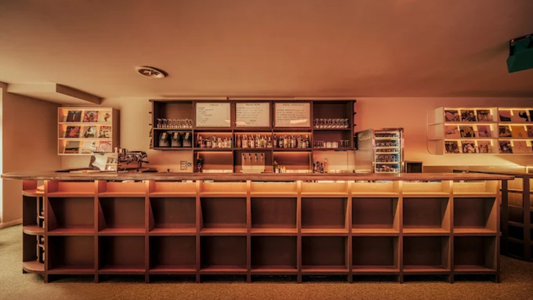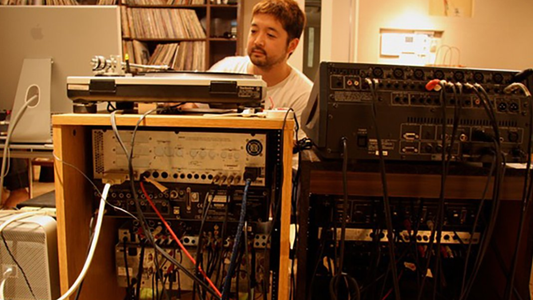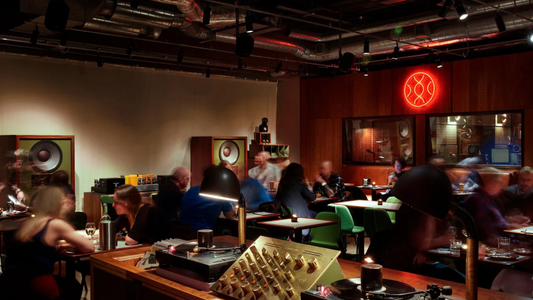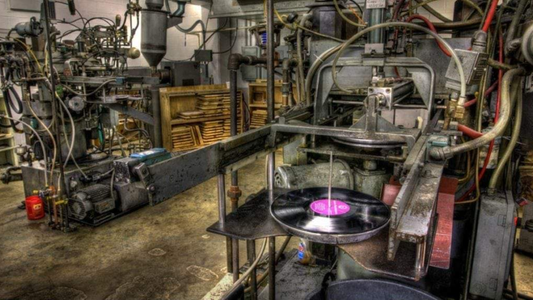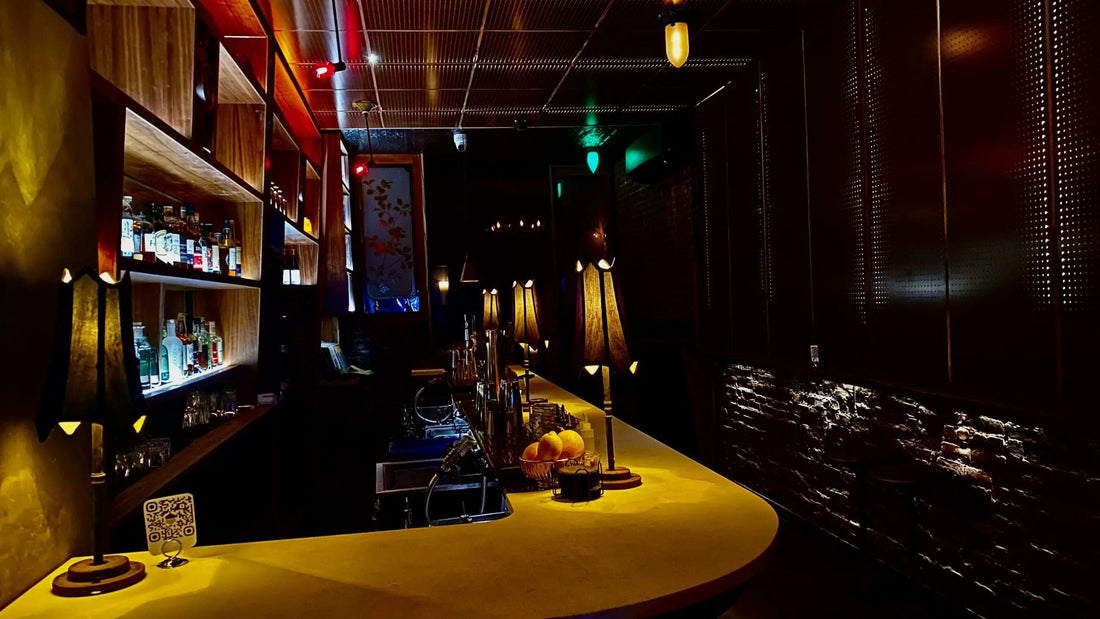
A Soft Hive for Sound: Honeycomb Hi-Fi in Park Slope
By Rafi Mercer
New Listing
Venue Name: Honeycomb Hi-Fi Lounge
Address: 74 5th Avenue, Brooklyn, NY 11217, United States
Website: honeycombk.com
Phone: Not publicly listed
Some rooms let you know they’re listening to you the moment you step inside. Honeycomb Hi-Fi is one of those rare rooms. Park Slope can be an overactive neighbourhood—strollers by day, brunch queues by late morning, conversations that refuse to be contained by café walls—but here, crossing the threshold is like dipping beneath the city’s surface noise.
The door opens onto a warm pocket of light. The air feels denser, not in an oppressive way but in the way a good library feels: hushed, intentional, a space with its own gravitational pull. Honeycomb’s interior is a precise marriage of craft and restraint—wooden acoustic panels lining the walls, soft amber light that seems to come from everywhere and nowhere, seating arranged not to maximise headcount but to preserve sightlines to the DJ booth and the twin towers of their speaker setup.
The sound system is both a centrepiece and a ghost. You see the solid wood plinths, the brushed-metal turntable controls, the cables as thick as a thumb—but the magic is in how unobtrusively it works once the needle drops. Honeycomb’s founders didn’t simply buy gear; they engineered an environment around it. The panels aren’t decorative; they’ve been measured, cut, and placed to coax the room into behaving. Even in a corner, the stereo image feels balanced, bass is taut without boom, and every high glides without glare. It’s the sort of sonic discipline you notice when you realise you haven’t noticed it—your body simply relaxes into the sound.
The bar runs along one side, but it doesn’t dominate. This isn’t a drinks-led venue with a soundtrack; it’s a listening-led venue with drinks in supporting role. Still, those drinks are worth attention. Honeycomb’s cocktail list is curated the way some venues curate DJ line-ups—each with a story, each intended to live alongside certain sounds. Highballs, of course, are staples, fizzy and bright to play against the sparkle of an ’80s city pop track. Darker, stirred drinks arrive like ballads—slower, richer, more introspective. The staff know the pairings; if you’re lucky, they’ll suggest something to match what’s on the platter.
And the platters themselves? That’s where Alfa Nights come in. These evenings, the venue devotes itself to the languid glamour of Japanese city pop and the burnished sophistication of post-war jazz from Japan’s most adventurous labels. The curation is expert, but it’s not elitist. There’s pleasure in hearing a Tatsuro Yamashita staple land just so after an obscurity from Makoto Matsushita, the shifts in texture as the evening moves from airy synths to brushed cymbals. Alfa Nights aren’t meant as history lessons; they’re emotional itineraries, tracing moods more than dates.
I arrived one Friday when the DJ was deep into the golden hour set—tempo just enough to keep heads nodding, midrange glowing in the room. Patrons were scattered at low tables, pairs leaning in over cocktails, small groups quietly plotting the rest of their weekend. Nobody shouted over the music. In fact, the music seemed to structure the conversations—bursts of talk in the breaks, listening during verses, laughter that fell naturally into the groove. This is how you know a venue’s acoustics are right: speech doesn’t fight with sound, it weaves through it.
Halfway through the night, I moved to the booth area to watch the operator work. No grand gestures, no constant knob-twiddling—just a steady, minimal hand on the crossfader, the occasional cue to line up the next track. The record sleeves leaned against the back wall like polite guests. You could read the crowd’s trust in the DJ’s pacing: no one glanced towards the decks wondering what was next, they simply waited for it. And when it came—a shift from a mellow jazz-funk cut into a shimmering slice of city pop—the change felt like a window opening.
The lighting deepens as the evening advances. Early on, the glow is soft enough to read a record’s liner notes; later, it’s more suggestion than illumination, shadows brushing over faces, glass catching the occasional glint. The room feels more enclosed, more intimate, without ever becoming claustrophobic. It’s a trick few small venues pull off—maintaining comfort while drawing people into a shared focus.
Sound aside, the thing Honeycomb gets exactly right is pacing. Nights here aren’t about a climactic peak and an inevitable crash. They are built like an arc of gentle hills, rising and settling, giving people room to breathe without losing the thread. You leave when you’re ready, not because the room has expelled you with last-call volume spikes.
I asked one of the staff about the name, and their answer made sense. A honeycomb is a structure designed for storage and connection, hexagons linked and reinforced, space used to hold and protect something valuable. Here, that something is music—and by extension, the people who come to hear it. The hive is the room; the bees are the listeners; the nectar is the sound.
On a return visit during a quieter midweek evening, the experience shifted but didn’t diminish. Fewer people meant more direct exchanges with the staff, longer stretches where a single track could hold the whole room. The bartender played matchmaker between drink and disc—an herbal, slightly bitter concoction for a moody late-’70s fusion record, something lighter and floral for a peppy swing number. Even without the Alfa Night theme, the curation stayed tight, each record speaking to the next.
In the Tracks & Tales framework, Honeycomb Hi-Fi would be a fascinating study. It’s not built for spectacle; it’s built for longevity. The room’s strength lies in making listening habitual, not exceptional. People here don’t come once for the novelty—they return because it’s one of the few places where they can actually hear themselves and the music in the same space. That consistency is its own kind of excellence.
By the time you step back out into Park Slope, the contrast is stark. The street is noisy again—traffic, voices, the occasional bass bleed from a passing car. But your ears, having been recalibrated, notice details you’d normally ignore: the rhythm of footfalls, the way car tyres hiss over wet asphalt, a snatch of melody from a passing cyclist’s speaker. Honeycomb sends you out tuned, and that might be its greatest gift.
Rafi Mercer writes about the spaces where music matters. For more stories from the Tracks & Tales, subscribe, or click here to read more.
